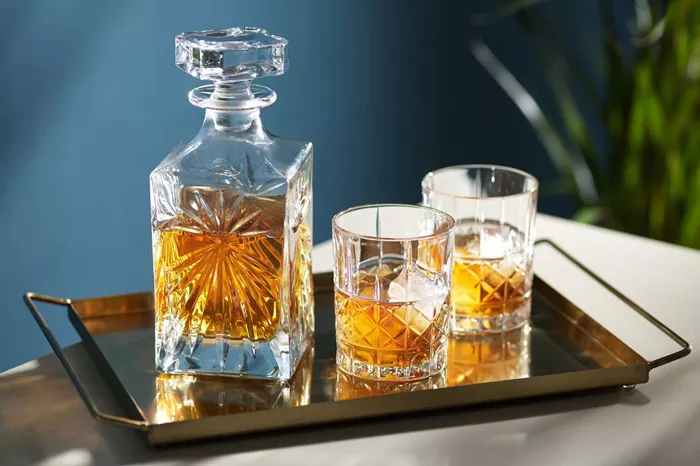Cocktails are mixed drinks that combine various ingredients like spirits, liqueurs, syrups, and other flavorings. But have you ever wondered why these delightful concoctions are called “cocktails”? The term “cocktail” has a rich and somewhat murky history, with several fascinating stories and theories about its origin. Let’s explore some of the most popular explanations for why a cocktail is called a cocktail.
Early Definitions and Usage
The earliest known use of the word “cocktail” dates back to the early 19th century in the United States. On May 13, 1806, the term appeared in a publication called “The Balance, and Columbian Repository.” The editor defined a cocktail as a stimulating liquor composed of spirits of any kind, sugar, water, and bitters. This definition aligns closely with what we now know as an Old Fashioned.
Possible Etymologies
The exact origin of the term “cocktail” is uncertain, and several theories exist. Here are some of the most popular ones:
The Horse Tail Theory: One of the most well-known stories traces the word “cocktail” back to horse racing. In the 18th century, horse breeders would use a practice called “cocktailed” to refer to horses with docked tails. These horses were often mixed breeds and were not considered purebreds. This mixing of breeds parallels the mixing of ingredients in a drink. It’s said that people started using the term “cocktail” to describe mixed drinks, borrowing the idea from the mixed breeds of horses.
The French Influence: Another popular theory suggests that the word “cocktail” comes from the French term “coquetier,” which means eggcup. In New Orleans in the early 19th century, a pharmacist named Antoine Peychaud served mixed drinks in eggcups. Peychaud’s mixture, which included brandy and his special bitters, became quite popular. The pronunciation of “coquetier” by English-speaking people evolved into “cocktail,” giving us the term we use today.
The Bitters Connection: Bitters, an essential ingredient in many cocktails, might also be linked to the name. Some believe that “cocktail” is derived from the term “bittered sling.” In the early 19th century, a “sling” was a popular type of drink made with water, sugar, and spirits. When bitters were added to these slings, they became known as “bittered slings” or “cocktails.” This theory highlights the importance of bitters in defining what makes a cocktail.
The Mexican Rooster Tail: Another colorful story involves Mexican taverns and roosters. In the 1800s, it was common for taverns in Mexico to serve drinks decorated with rooster feathers. The vibrant and attractive feathers resembled a rooster’s tail, or “cock tail.” English-speaking visitors may have adopted this term to describe the eye-catching, mixed drinks they enjoyed in these taverns.
The Revolutionary War Story: During the American Revolutionary War, soldiers would often celebrate victories with mixed drinks. One story suggests that a tavern owner served a drink garnished with the tail feathers of a rooster, which were said to symbolize victory. The soldiers called the drink a “cocktail,” combining the celebratory nature of the drink with the rooster’s tail feathers.
The Apothecary Explanation: Apothecaries, or early pharmacists, played a significant role in the development of cocktails. These early pharmacists often mixed various ingredients, including herbs, spices, and alcohol, to create medicinal concoctions. The term “cocktail” might have been used to describe these mixed medicinal drinks, which eventually evolved into the recreational cocktails we know today.
See Also: Canned Cocktails Set for a Booming Summer
Spread and Popularization
By the mid-19th century, the cocktail was becoming a popular drink in America. Bartenders began experimenting with various spirits, mixers, and garnishes. The cocktail became associated with sophistication and socializing.
During the Prohibition era (1920-1933) in the United States, the cocktail’s popularity surged. Speakeasies (illegal bars) often served cocktails to mask the taste of poorly made, illicit alcohol. The art of mixing drinks flourished as bartenders sought creative ways to make the rough spirits palatable.
Modern-Day Cocktails
Today, the term “cocktail” encompasses a wide variety of mixed drinks. From classic cocktails like the Martini and Manhattan to modern creations, the art of cocktail making continues to evolve. Mixologists (a term for skilled bartenders) push the boundaries, using new ingredients and techniques.
Conclusion
The term “cocktail” has a rich and varied history. While the exact origin of the word remains a mystery, its journey from a simple mix of spirits, sugar, water, and bitters to the sophisticated and diverse drinks we enjoy today is a testament to human creativity and the enduring appeal of a good mixed drink.


